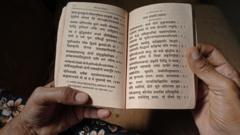The relationship between India's food shortage and the enrichment of American library collections may appear surprising, but it is a testament to the complex intertwining of global economies and cultural exchange. The US initiative known as PL-480, launched in 1954 under Public Law 480, operated as a form of assistance termed "Food for Peace," aimed at alleviating food insecurity in nations like India while also managing surplus crops in the United States. Ananya Vajpeyi, a scholar and visiting professor, recalls in her assessments of library archives how the University of Chicago became a repository of South Asian literature, holding over 800,000 volumes dedicated to the region's studies, an evidently invaluable asset acquired partly due to this program.
During the 1950s, facing severe food shortages, India became one of the largest recipients of US grain aid through PL-480. The initiative enabled India to purchase American agricultural goods using local currency, effectively reducing its foreign exchange strain. Importantly, funds generated from these transactions were utilized to enhance educational resources across more than two dozen American universities, granting them access to local books and periodicals in numerous Indian languages.
James Nye, director of the digital South Asia library at the University of Chicago, pointed out the program’s unexpected benefits, stating that PL-480 significantly enriched library collections. Bhogendra S. Sarma, a bibliographer noted for documenting South Asian studies, outlined how a dedicated team of 60 professionals commenced operations in Delhi to procure essential academic materials. This project was both intricate and challenging as it necessitated collaboration with diverse literature dealers proficient in the multiple languages spoken throughout India.
By the late 1960s, the Michigan-based institutions were receiving hundreds of thousands of publications, significantly enhancing their resources. Items acquired included critical historical texts and works that reflect India's rich culture. Nonetheless, the acquisition strategies evolved; by 1963, the focus shifted primarily toward research-quality materials, limiting the intake of fiction and casual reading.
However, discussions continue about whether such programs might have undermined local access to these resources. As exemplified by institutions like the University of Wisconsin-Madison, which now boasts an extensive South Asian literature collection, important questions regarding the implications of redistributing knowledge and power dynamics involved in such exchanges arise.
The termination of the PL-480 program in the 1980s put pressure on US libraries to independently finance their collections. This change has resulted in higher costs for acquiring South Asian materials and raised further challenges concerning preservation and accessibility. Many books sourced from this initiative, while still available in Western libraries, face threats of deterioration in India due to inadequate preservation measures.
Ultimately, the legacy of the PL-480 program reflects both an achievement in fostering academic collaboration and a continued challenge in addressing knowledge gaps between the East and West. As Ms. Vajpeyi observed, while the Regenstein Library provided her with ample resources for her research, many libraries in India remain plagued by issues of neglect and restricted access, underscoring the disparities that still exist in the global distribution of knowledge.




















